Decoding Americans' Menu Preferences and Ordering Habits
Key Findings:
- Menu indecisiveness is rampant: 79% of Americans have a difficult time deciding what to order.
- American diners do their homework before going out to eat at a restaurant. The survey found that 83% review the menu beforehand and half (50%) decide what to order before arriving!
- Menu preferences are all over the map. While 1 in 10 prefer QR Codes, 95% of Americans surveyed think restaurants should still offer in-person menus.
- Americans struggle to decide where to eat. When faced with an abundance of options, the top decision factors in choosing a restaurant include location, cost of food, and habit.
- Reviews play a critical role in restaurant selection. The survey revealed that 3 in 4 people look at restaurant reviews before going out to eat, and 79% say those reviews impact their decision about eating there.
Table of Contents:
How do Americans Decide What to Order?
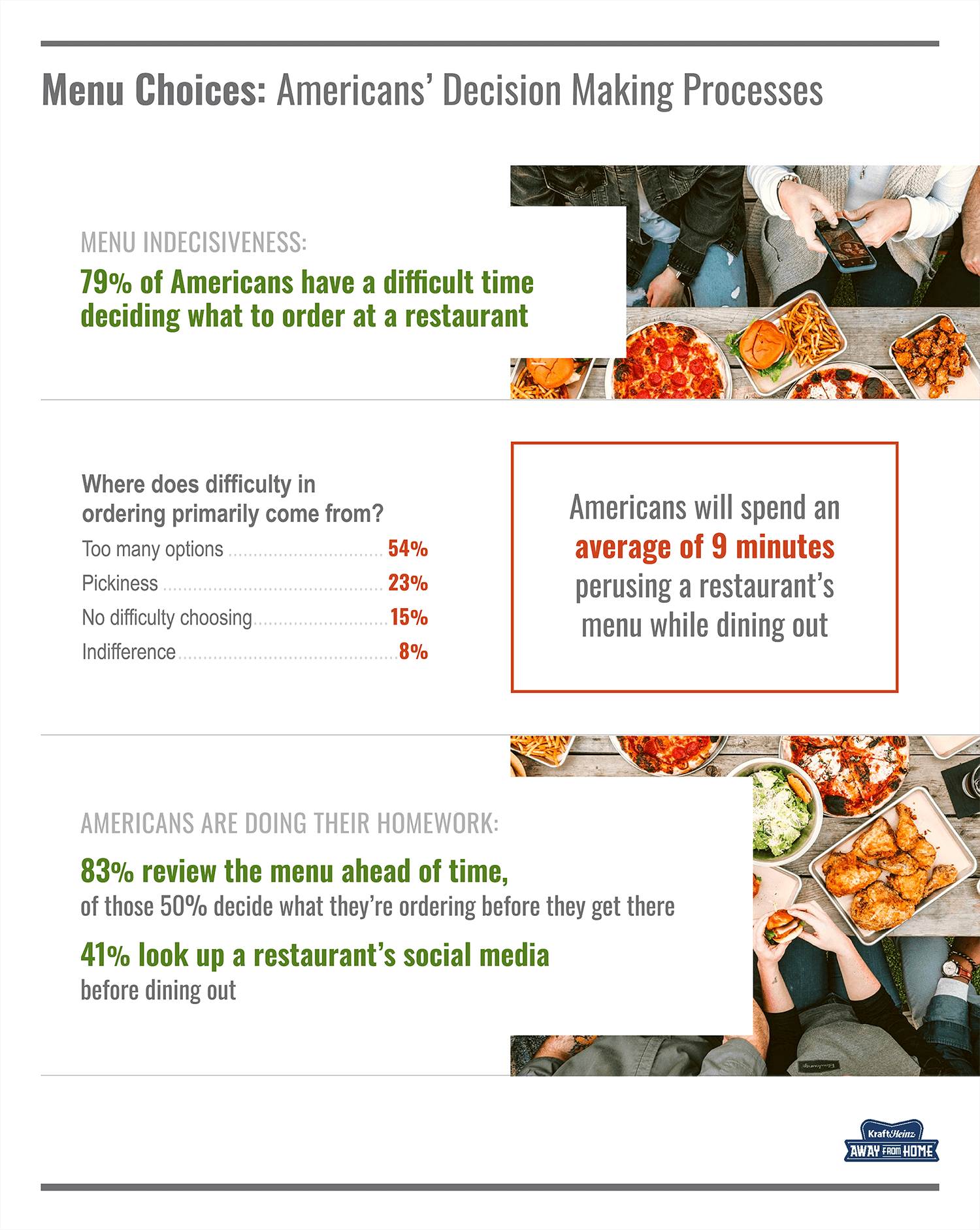
When it comes to dining out, 79% of Americans grapple with the dilemma of choosing what to order. On average, Americans invest 9 minutes figuring out what they want to eat once they're seated at a restaurant.
Where does the difficulty in ordering primarily come from? For 54% of American diners, they can’t decide between the abundance of options. For nearly 1 in 4, it’s due to their pickiness; and for another 23%, they are indifferent, or have no problem choosing.
When it comes to making dining decisions, it's clear that information is key. The majority of Americans (83%) review a restaurant's menu before setting foot inside, and half of those who do (50%) have already decided what they'll order before arriving. Another 2 in 5 look up a restaurant’s social media profiles before dining there.
Americans' Menu Preferences
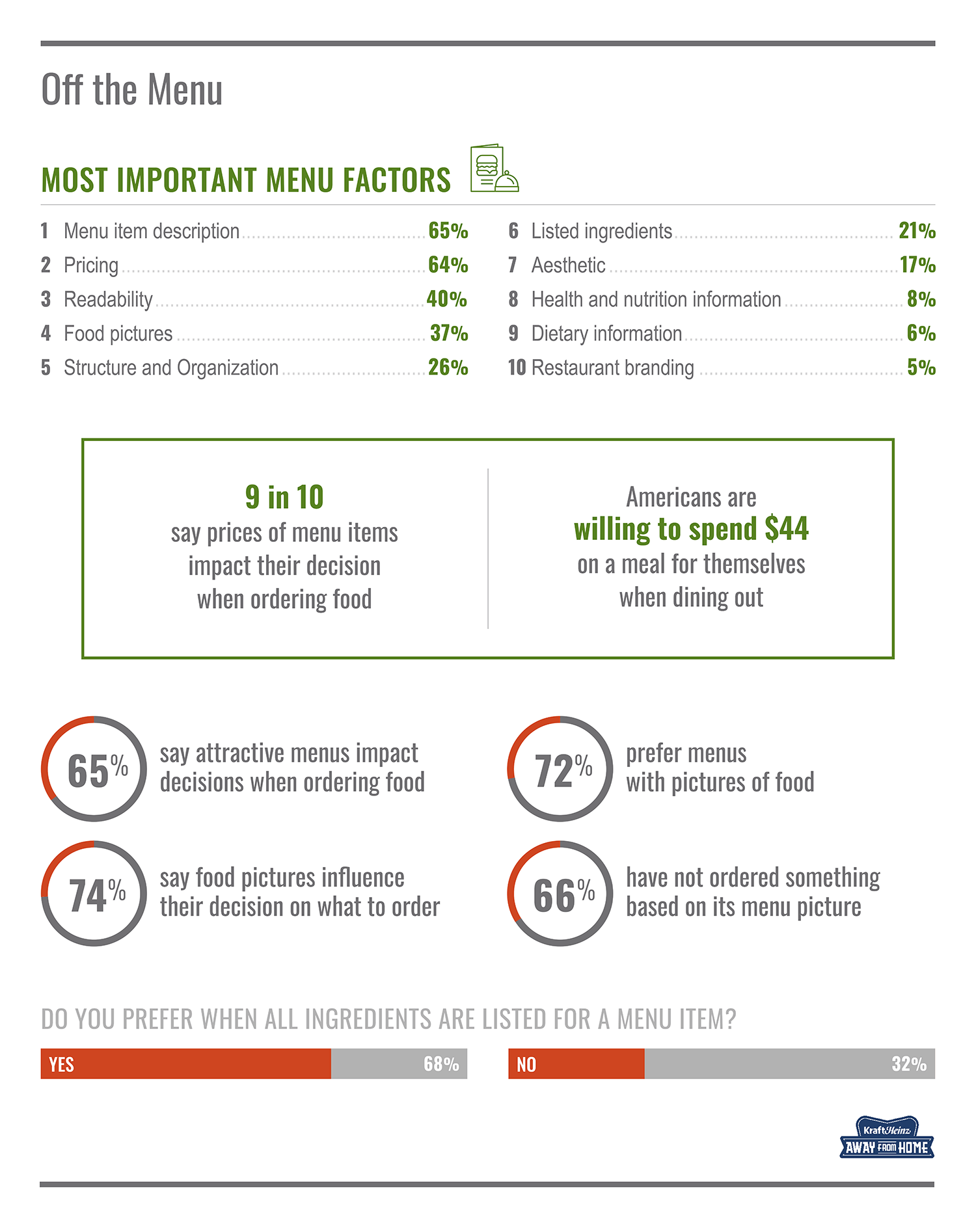
On a menu, transparency matters, as 68% prefer menus to list all ingredients of a dish. Additionally, 65% of diners say attractive menus impact their ordering decisions. Key menu factors for American diners include item descriptions (65%) and pricing (64%). Clear pricing is crucial, with 9 in 10 considering it when ordering. Americans are also willing to spend $44 on a meal for themselves when dining out.
Food pictures on a menu influence the order decisions of nearly 3 in 4 diners, and 66% have specifically not ordered something based solely on its picture. The majority (72%) of diners also prefer menus with pictures of food, versus menus without images.
QR Code Menus Vs. Physical Menus
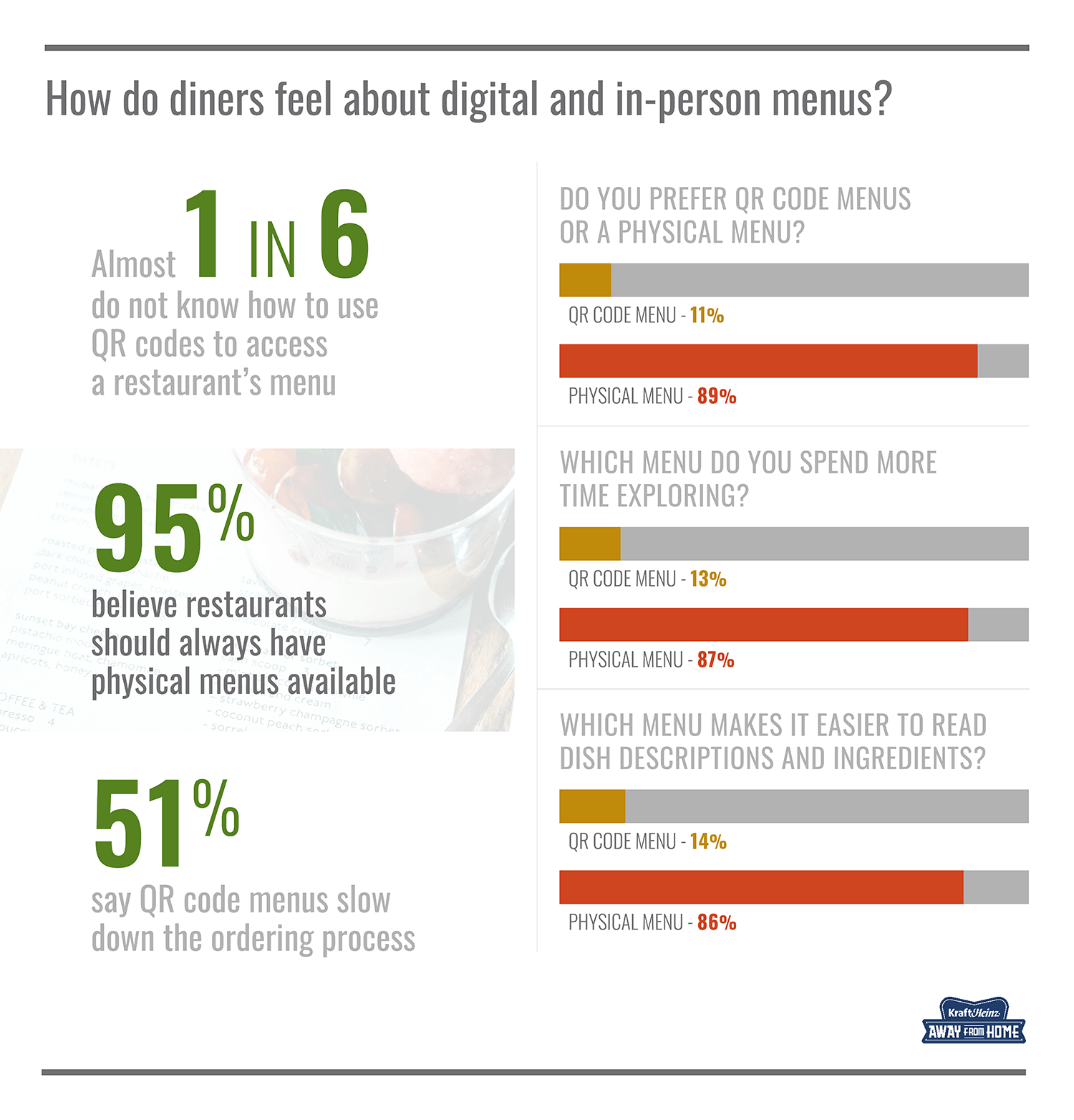
While QR code menus in restaurants have gained popularity since the onset of the COVID-19 pandemic, nearly 1 in 6 diners don't know how to use them. An overwhelming majority, 89%, say they prefer physical menus to QR codes, and 95% believe physical menus should always be available. Only 1 in 6 diners find QR code menus to be more convenient than traditional menus, but 51% of diners say they slow down the overall ordering process.
In terms of information quality, 86% find the physical menu easier to read for dish descriptions and ingredients. The majority (87%) also add that they spend more time exploring a physical menu versus a QR code menu.
Nutritional Value and Menus
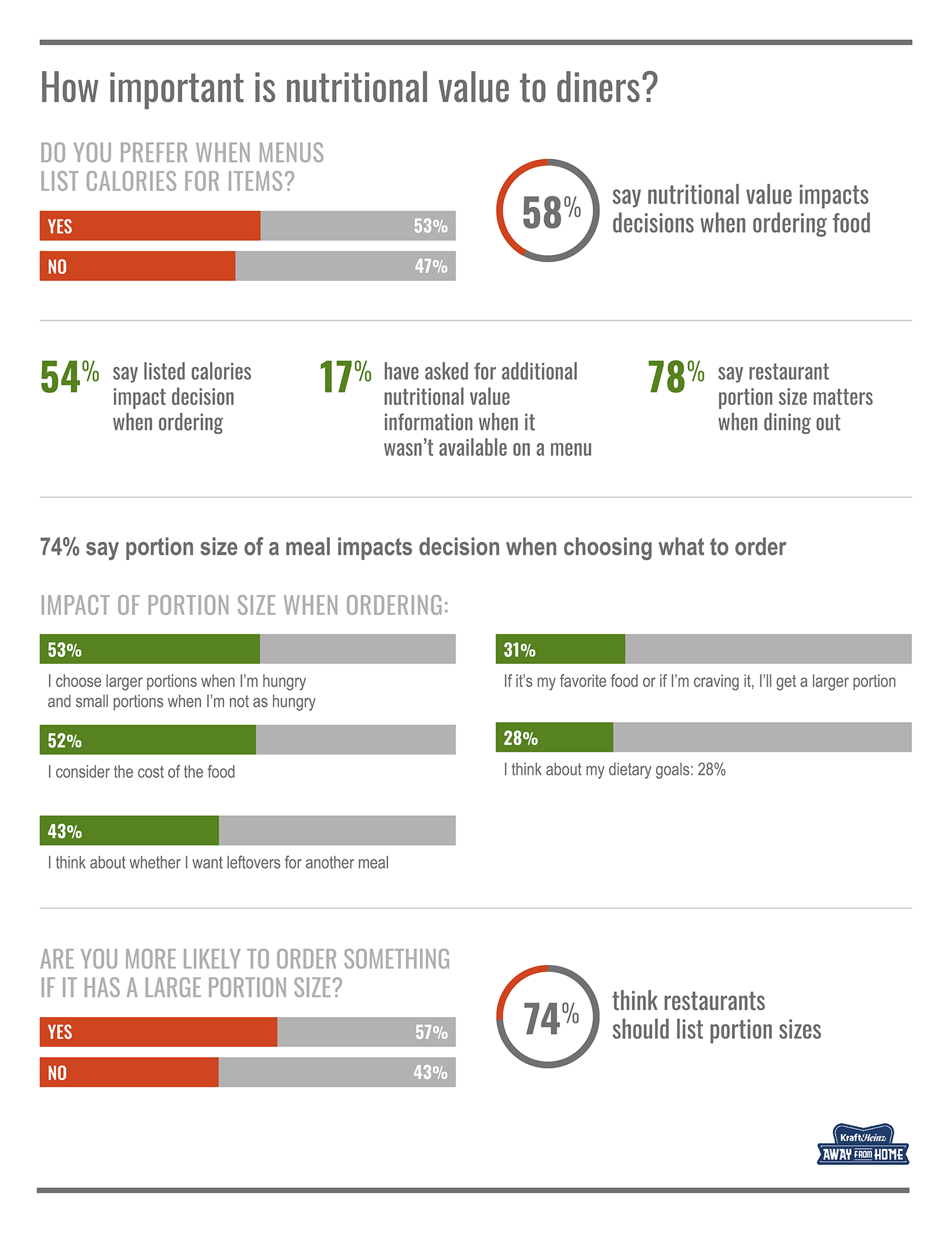
The nutritional value of meals is a key factor for 58% of diners when choosing what to order. More than half (53%) prefer calories to be listed on menus, and 54% say that listed calorie count influences what they order. Over 1 in 6 have asked restaurants for additional nutritional information when it wasn’t available on a menu.
Portion size also matters, with 78% considering it when dining out and 74% saying it impacts their decision when ordering. Factors influencing portion choices include hunger levels (53%), cost (52%), leftovers (43%), cravings (31%), and dietary goals (28%). Most notably, 57% are more likely to order if a dish has a large portion size, reinforcing the importance of serving size. Nearly 3 in 4 believe restaurants should list portion sizes for better transparency.
How Americans Decide Where to Go to Dinner
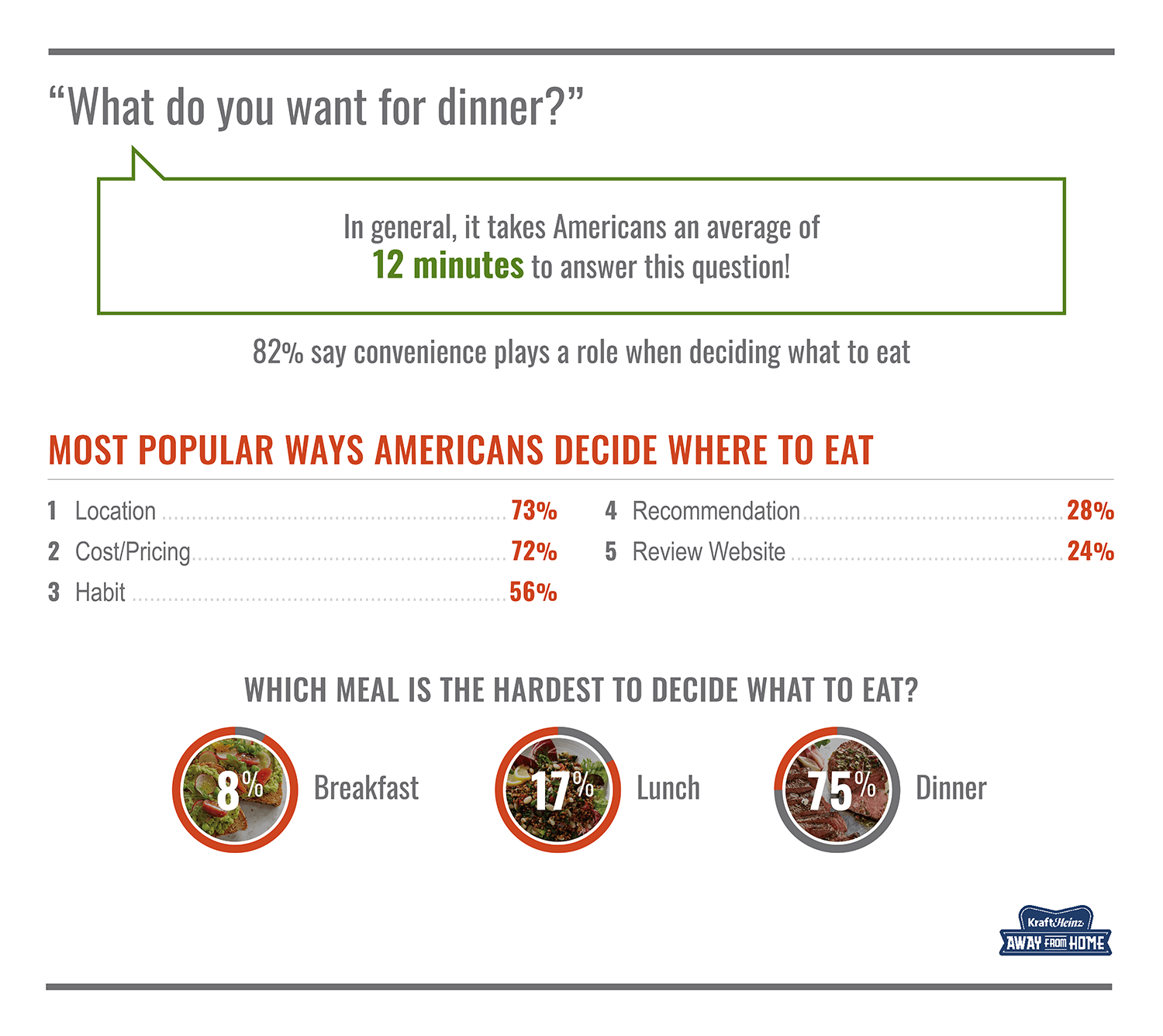
When asked the age-old question, "What do you want for dinner?" Americans, on average, take around 12 minutes to provide an answer. It's clear that, for 82% of diners, the convenience factor is a significant player in their ultimate dining choices.
On average, Americans invest 14 minutes in selecting a restaurant for their meal. As for the question of where to eat, location and cost are the top influencing factors, with 73% considering a restaurant’s proximity and 72% minding their budget.
When it comes to deciding between breakfast, lunch, and dinner; for 1 in 4 Americans, dinner is the hardest meal in deciding what to eat.
How do Restaurant Reviews Impact Diners’ Decisions?
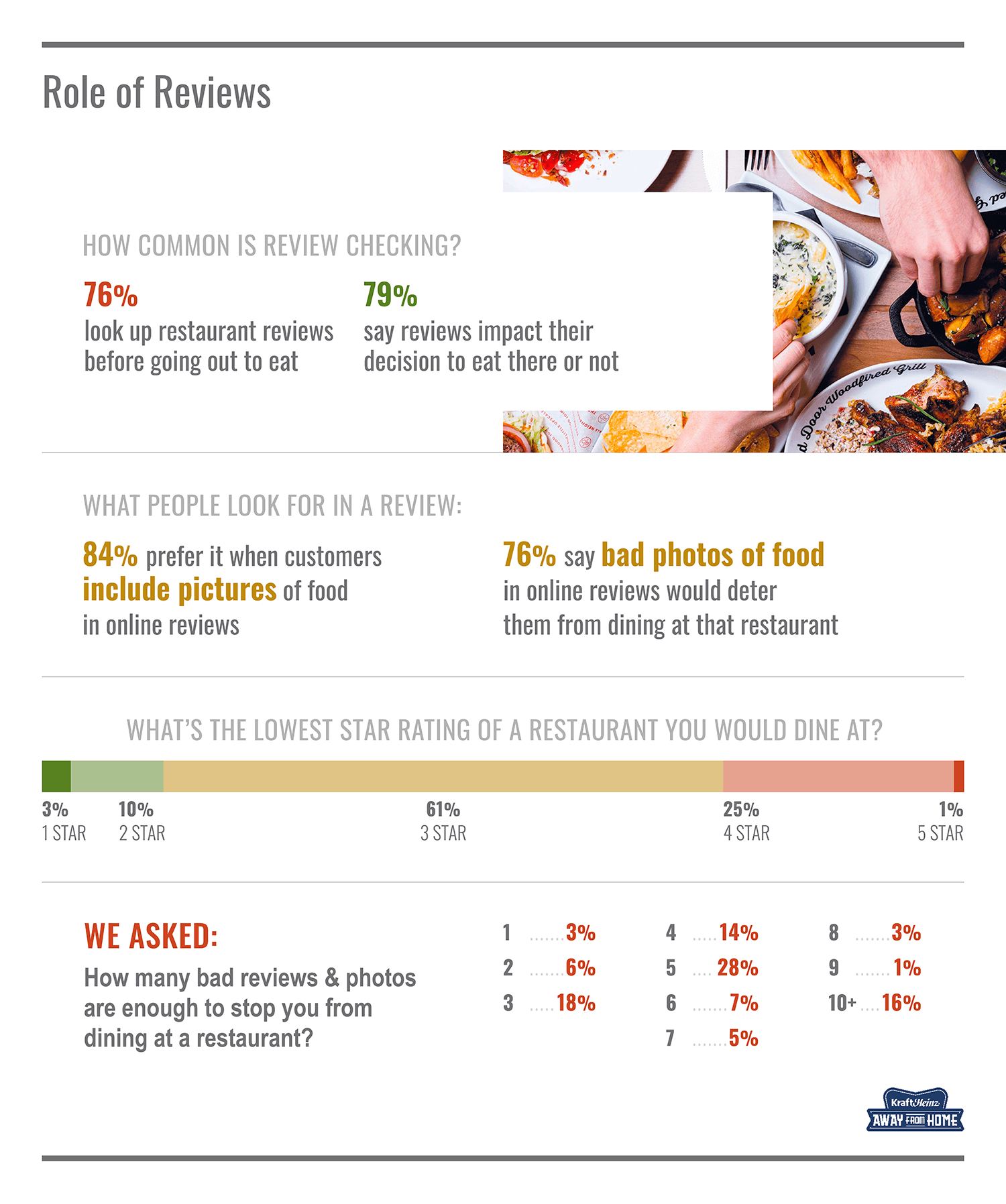
It’s clear the reputation of an establishment matters. More than a quarter (76%) look at restaurant reviews before heading out to eat, and for nearly 80% of diners, these reviews significantly influence their choice of dining establishment.
The visual impact of reviews also plays a significant role, as 84% prefer when customers include pictures of food in their reviews. When it comes to bad reviews and photos, opinions vary, with 28% saying that “five” is the magic number when deciding to stay away from a restaurant. More than half (59%) say that if a restaurant has five or more bad pictures or reviews, it would deter them from dining there.
Dining and Relationships
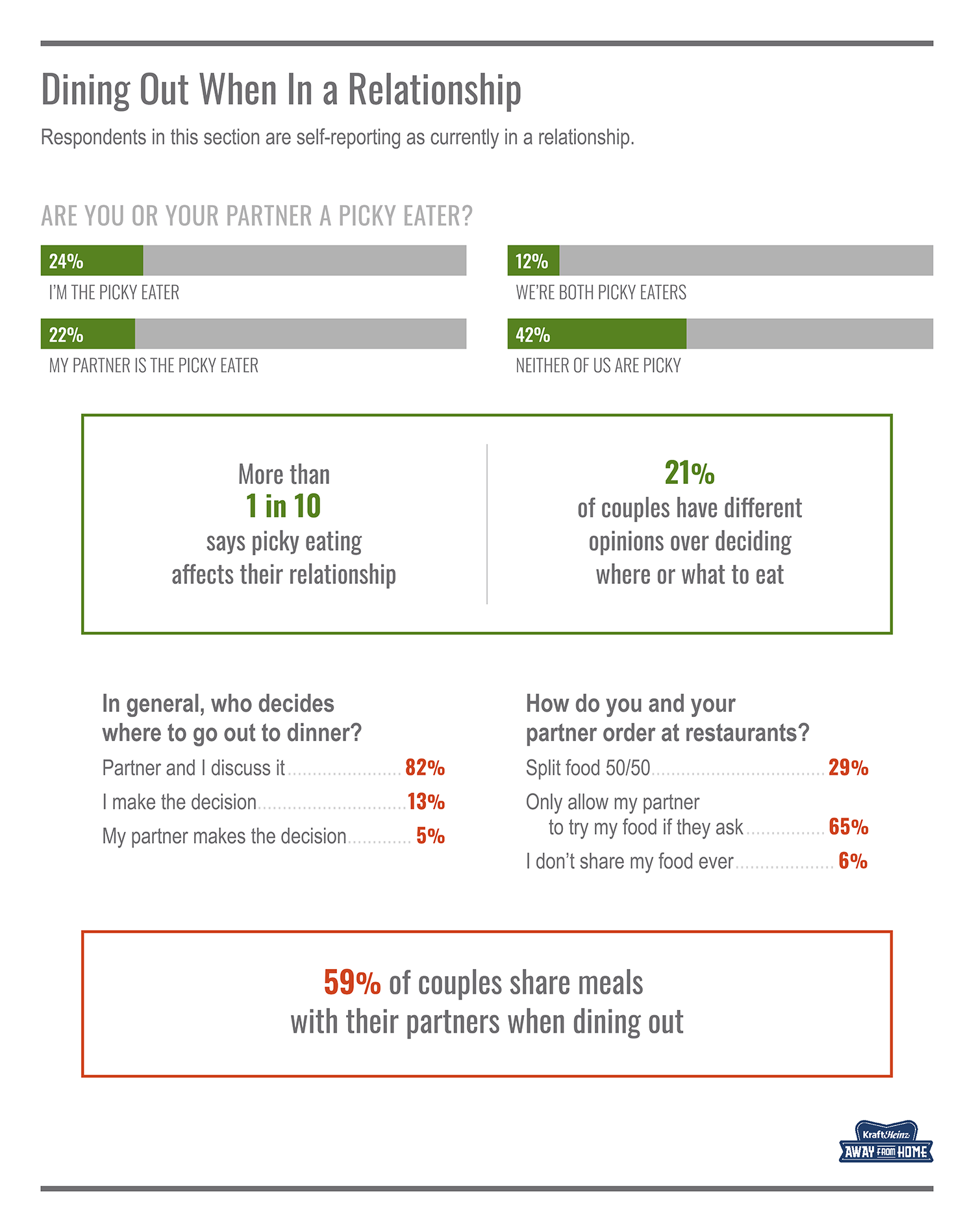
When it comes to eating out at restaurants with your significant other, almost 1 in 4 diners in a relationship confess to being the “picky eater.” Nearly 1 in 5 points the finger at their partner in the eternal battle of picky eaters. Yet, varying preferences around food and restaurants are common, with more than 1 in 10 respondents revealing that picky eating creates friction in their partnerships.
More than 1 in 5 couples (21%) have different opinions over where or what to eat. When it comes to ordering at restaurants, 29% opt for a 50/50 split of food, 65% allow their partner to try their dish only if they ask, and 6% keep the meal all for themselves (no sharing allowed).
At least the decision-making tends to be mutual, with 82% of diners saying they discuss the restaurant with their partner when deciding where to eat. And nearly 3 in 5 couples share their meals once they’ve decided what (and where) to eat.
Methodology
In September of 2023, US Foods surveyed 1,003 people, which reflects the demographic makeup of the general American population.
Citing This Survey
When using this data and research, please attribute by linking to this study and citing usfoods.com

